Artist based in Fayetteville, AR
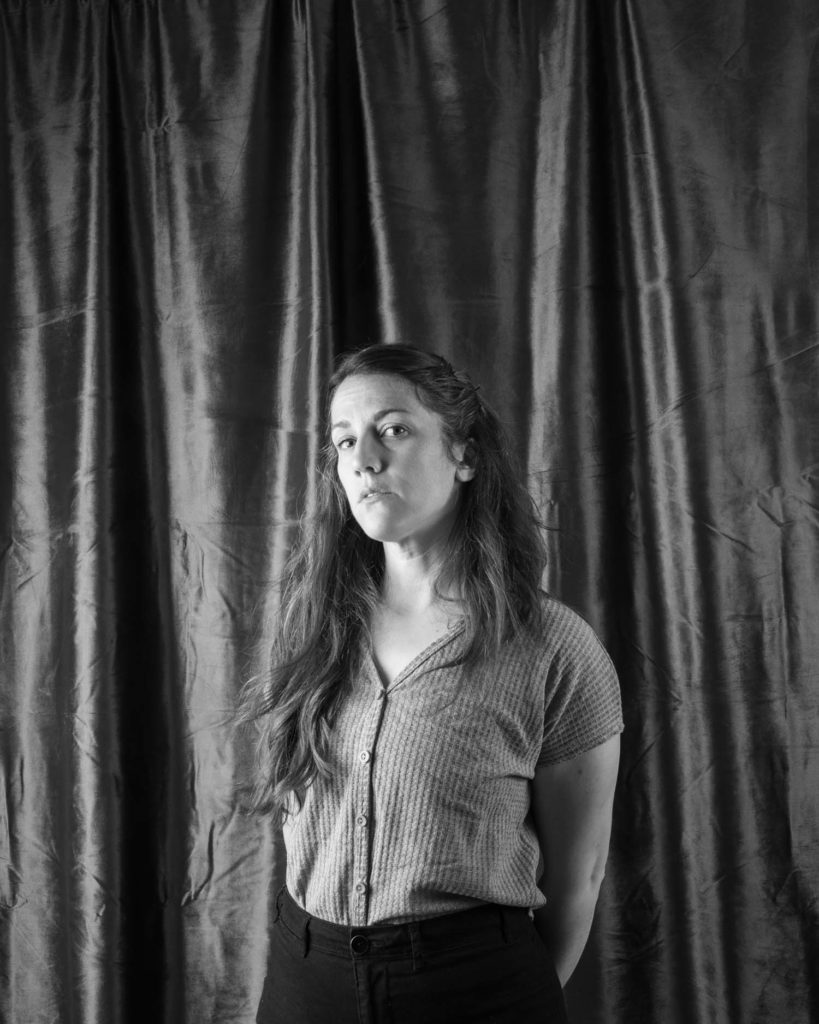
Rebecca Drolen, Portrait of the photographer
Tell us about yourself, what's your background?
I am an artist and educator working in Arkansas and my work is interdisciplinary with influence from photography, installation and performance. My work focuses on the gendered expectations we place on bodies.
Making photographs became meaningful to me almost immediately upon taking my first darkroom course in high school at the age of 15. It seems worth noting that self-portraiture and some element of performing for the camera was a part of what intrigued me about photographs from my earliest interactions with the camera. I took a deeper dive in undergrad as I tinkered with art courses in Photography and Art History, although my major was in Journalism. I eventually recognized artmaking and specifically making pictures as the space where I was most happy, challenged, and confident – with that I began my MFA at Indiana University. While photography was an immediate connection, it took me much longer to really believe that I could be an artist. I am not sure that I was comfortable with that title until my late 20s (despite having already exhibited my work with some significance, attained a graduate degree and taught at the college level for years!) What felt like audacity or privilege to claim art as my life pursuit was, in hindsight, insecurity. I now attempt to bolster my own students’ perceptions of the reality and importance of communicating as an artist from the very earliest stages of making.
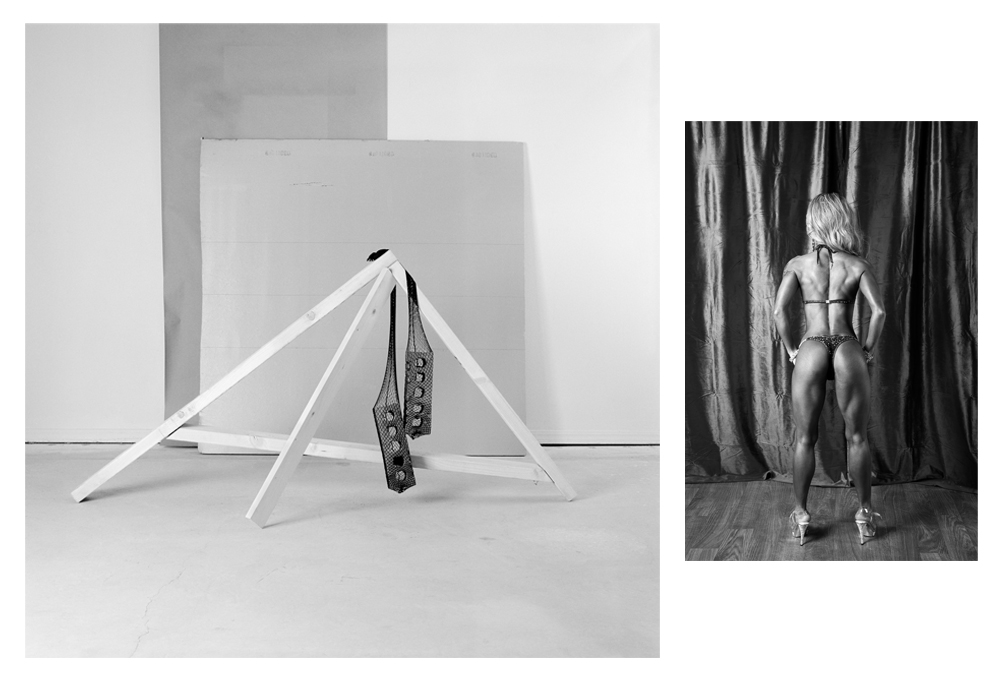
Figure 008: Droop 35.5 x 42” framed print & 24 x 24” print on panel Archival Pigment Prints 2021
"In the work, I use photographs and architectural constructs to explore balancing and tipping points within culturally unstable expectations of female strength, resilience, and bodily performance."
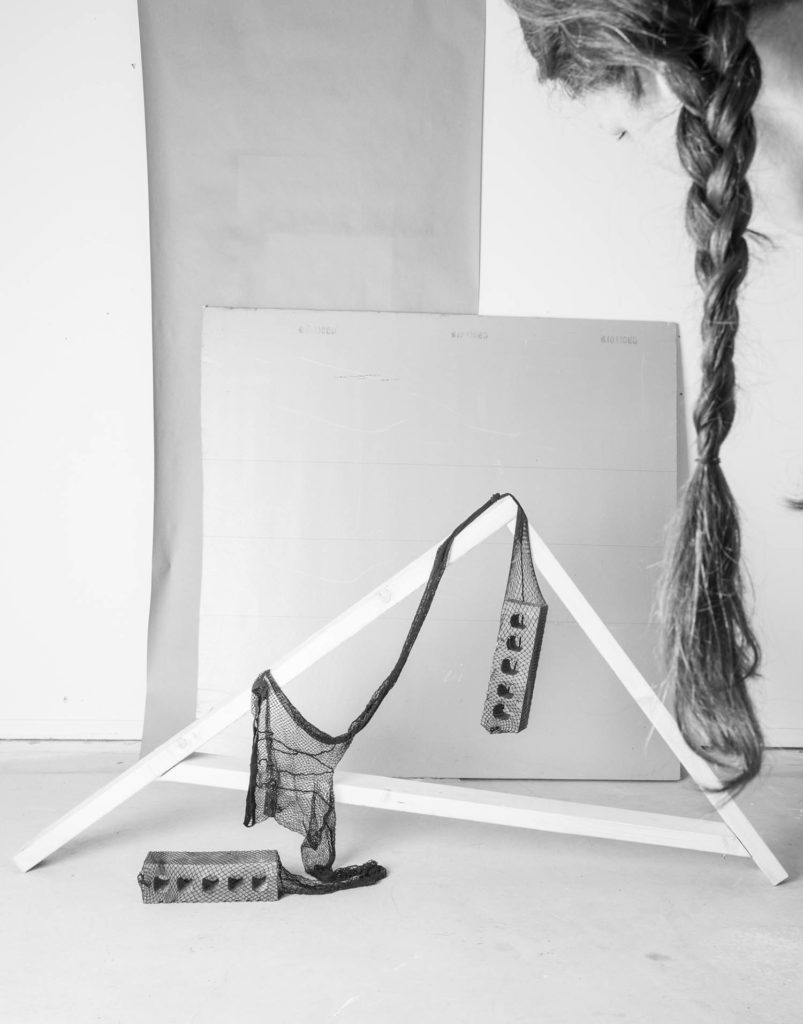
Photobombing my own test shot
What are you currently working on and where did the inspiration for it come from?
The project that I am currently working on is called Unstable Entity. I began the work in the summer of 2021 after recognizing my place in a space of collective exhaustion and psychological turmoil after a year of attempting to carry on amidst a global pandemic. In the work, I use photographs and architectural constructs to explore balancing and tipping points within culturally unstable expectations of female strength, resilience, and bodily performance. The installations compare physical bodily forms to ad-hoc assemblages that are tenuously balanced using common building materials. Within this juxtaposition is a meditation on the body as an architectural construct and the unsettled standards of what it means to be a “strong woman.” The collage of forms speculates on the relationship of female strength to intimidation, sexuality, and desire and the individual stamina required to pursue both mental and physical wellness. Female body builders enter the work as a form of archetype or idealized body representing a maximized performance of strength and physicality. My own performances pursue stamina, wavering balance, and the labor associated with managing the collision of roles between being the subject and the operator of the photograph. The work is a montage of layered priorities alongside feverish persistence to perform to meet the standards of contemporary femininity, despite its distinct illogics.
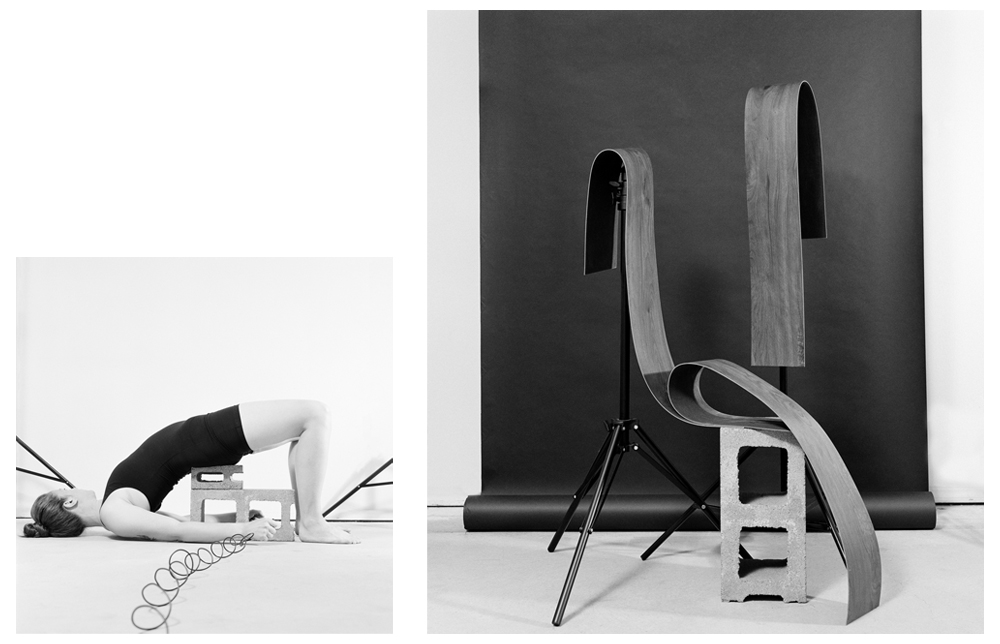
Figure 008: Droop
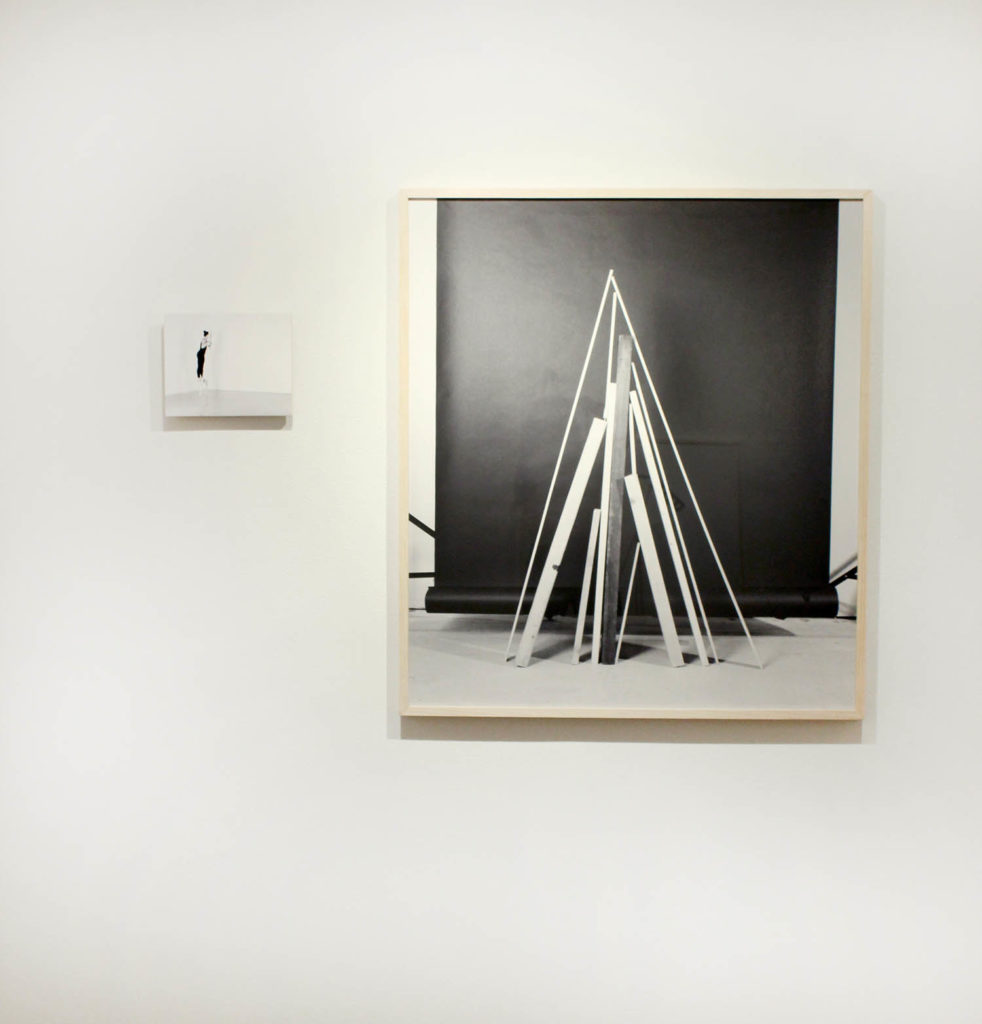
Installattion view of Figure 006: Prop up
Innovation does not only happen in the field of technology — it occurs everyday in an artist's practice. What do you do for inspiration?
I try to be very open – so many aspects of my life influence my practice or inspire thoughts and new mediations on work that I hope to make. My role as a professor, while costly in the resources of time, is abundant with inspiration. It is humbling to be amongst many younger artists working through manifesting their ideas into objects or images, and it is a privilege to share in steady, weekly conversations about art with them. While I acknowledge my ability to influence those who study with me, there is a reciprocal relationship where their thoughts, experiments, and perceptions have a profound impact on my own approach and practice. Looking at a lot of art, talking about art frequently, and researching my lines of interest all nurture my ideas and keep me motivated to be a part of a larger conversation in contemporary art.
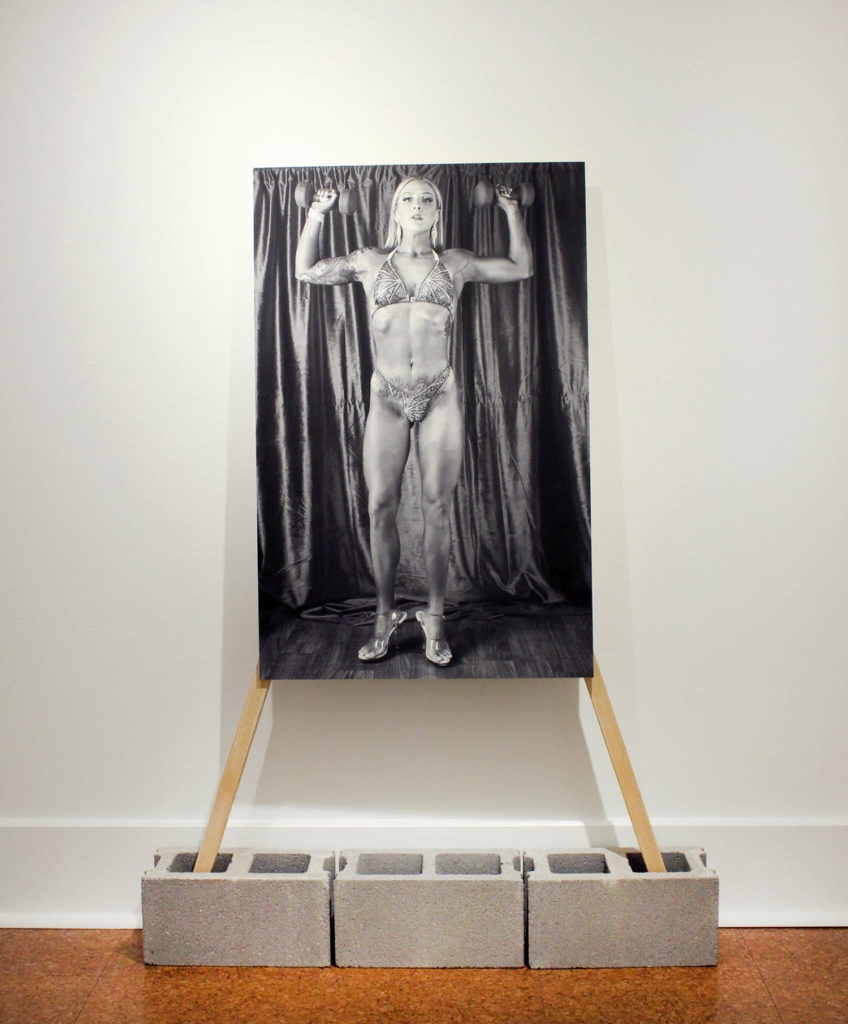
Installation view of Figure 007: Support
Investing in the connection between my own well-being, mental health, and its relationship to my physical body has also been a source of inspiration, particularly in the past two years in which the pandemic reduced many of my relationships and work responsibilities to a non-physical interaction. Running, rock climbing, and yoga specifically became intense spaces of physicality that actually allowed my mind to rest, process, and regain clarity that sincerely impacted my art practice. While at times clumsy, this bodily force and its connection to mental calm is incredibly relevant to the work that I have been pursuing within the past year.
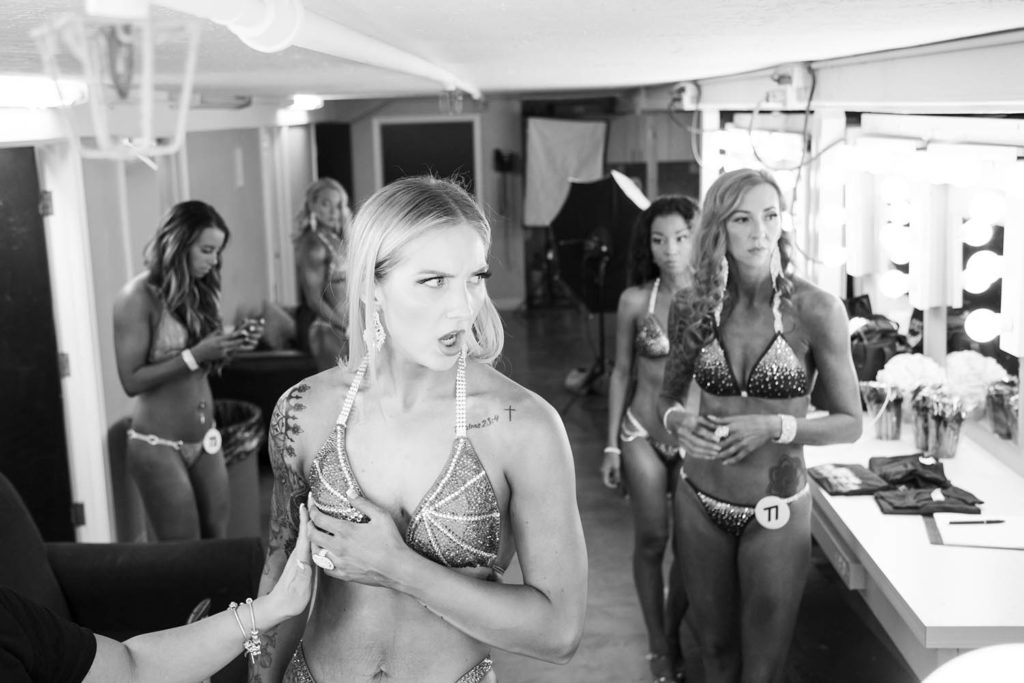
Backstage at bodybuilding competition
Describe your practice and process. Where do ideas start for you? In the studio or being in the world?
While I carry all of my thoughts and concerns of the world with me into the studio, the space of the studio is where my work most intuitively comes together. I am not a photographer that goes out into the world looking for photographs, I build and assemble what I want to see. I approach the studio as an experimental space that does not need to follow logic or rules of the world – it is a laboratory. I also see it as a safe and sincere personal space, where I can break my own rules of decorum that many may know me by. I mine the world for possibilities, indulgently browsing scrap building stores for hours, but those materials with potential nearly always find their way back to my studio to be given agency and new possibility within its boundaries.

Study of movements on a dolly
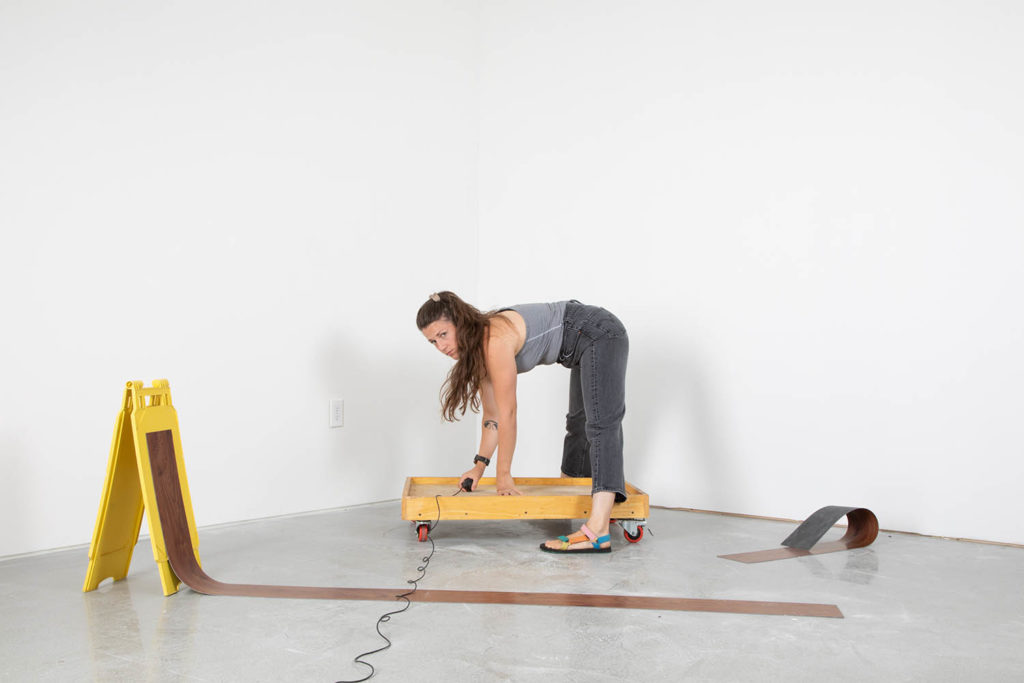
Compulsive tests of light and position while working alone and attempting to be the subject of the image.
How do you make your work, does it start with a sketch? Can you tell us about your style? How did you arrive at it?
There is not just one way – I sketch at times, keep notes, leave myself voice messages or emails, and then comb through that information for what is actually useful or relevant. I am most nimble when in the middle of a big burst of making – that sustained attention to the work means that I carry it in the back of my mind throughout each day and am problem solving off the clock.
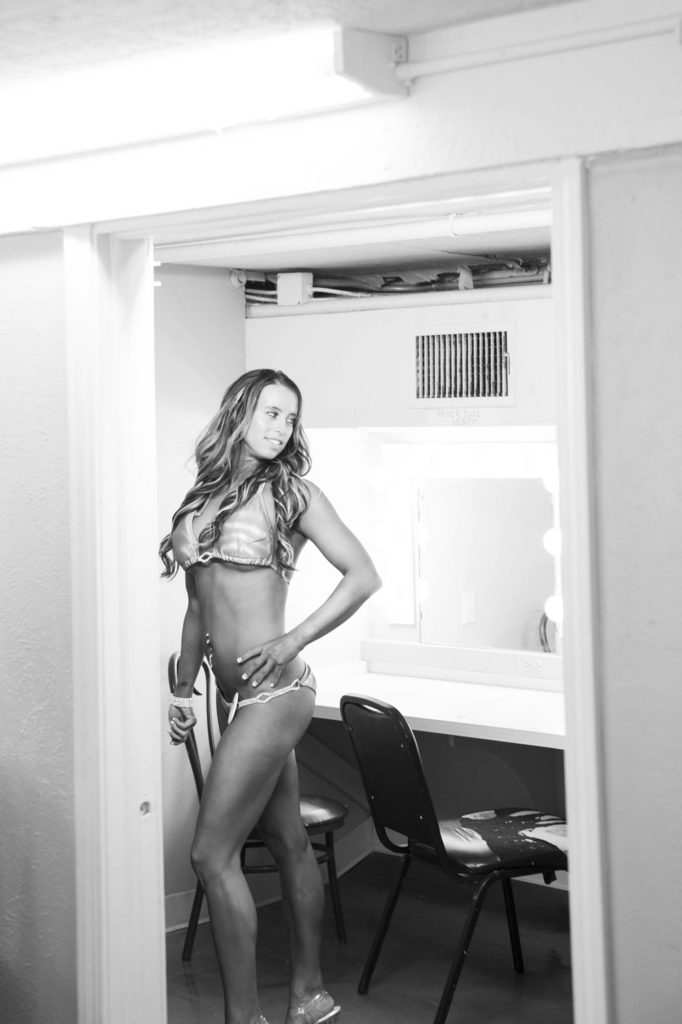
Backstage at bodybuilding competition
Many artists live by their routines, working for only a certain period of time of day, listening to dedicated playlists, or eating specific foods while in the studio. Do you have your own studio ritual? What does that look like for you?
Snacks, good music, solitude, and plenty of time! I am a slow maker and need time to build, contemplate, revise, and refine. I have days where I try to make something in a rush, then I struggle, and get stressed. When I come back to it in a more relaxed or less flustered headspace, I can often find the solution or resolution of the image quite intuitively. I like to work in steady bursts – sustained periods of time where I can let one idea roll into the next and create a building conversation – and then I like to rest, stop making and really look at and engage with the work before going back into production mode. That resting equates to coming up for air. My mind stays engaged with the work, but it is easier to make sense of what I have most recently made and know how to dive back in meaningfully.
Who are your biggest influences?
My daughter, my partner and our home are my safe space and forever influence and change how I perceive the world and my life.
The artists and ideas that I have been consistently coming back to in the past couple of years include Jeanne Dunning’s work which presents the body as an unfamiliar or strange space, Mary Reid Kelley’s allegorical, absurd, performative feminist histories, and Lorna Simpson’s installations regarding hair and the body.
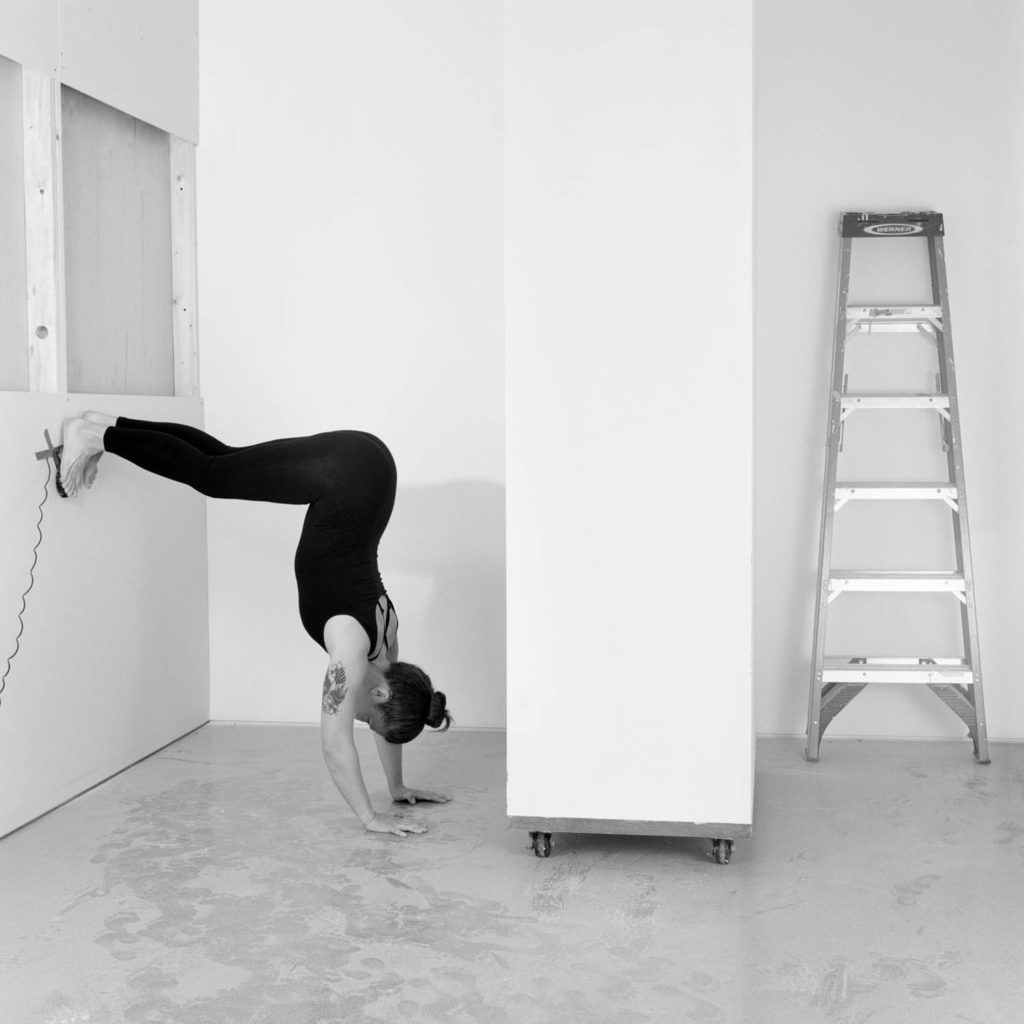
Figure 001: Inversion
How will Innovate Grant contribute to your practice?
The Innovate Grant will offer some financial relief toward the purchase of small equipment and material supplies that I use directly in the studio – lights, tools, film, paper, wood, mirrors, glass, etc. I am preparing new work for exhibitions this summer as well as a solo exhibition in the summer of 2023.

Installation view of Figure 009: Press
What’s the best piece of advice you’ve been given?
Some very important advice that I was given (and took too long to actually put into practice) was to schedule and protect my studio time each week, rather than just working when I feel excited, inspired, or have a deadline. Working as an artist within academia, there are approximately 10 million priorities that I need to divide my time between each week, and it is far too easy to sacrifice my own practice to in order to help others out (often without even realizing that is what is happening!). Once I began blocking out time in my calendar to be in the studio, I realized that I would have to make a conscious decision to break that commitment with myself in order to make any other plans. That structure and discipline to show up for myself and my work has been essential in ensuring time and space for research, making, and / or the creative ramblings that fuel my practice.
What is the best advice you would give to other artists?
Kindness, authenticity, stamina. The art world is small – treat people well, keep making work, and show up.

Test, gesture, play, repeat
View Rebecca Drolen's Portfolio
Stay up to date with Rebecca Drolen
Instagram @rebeccadrolen
www.rebeccadrolen.com